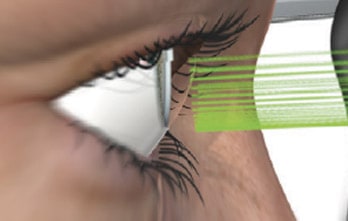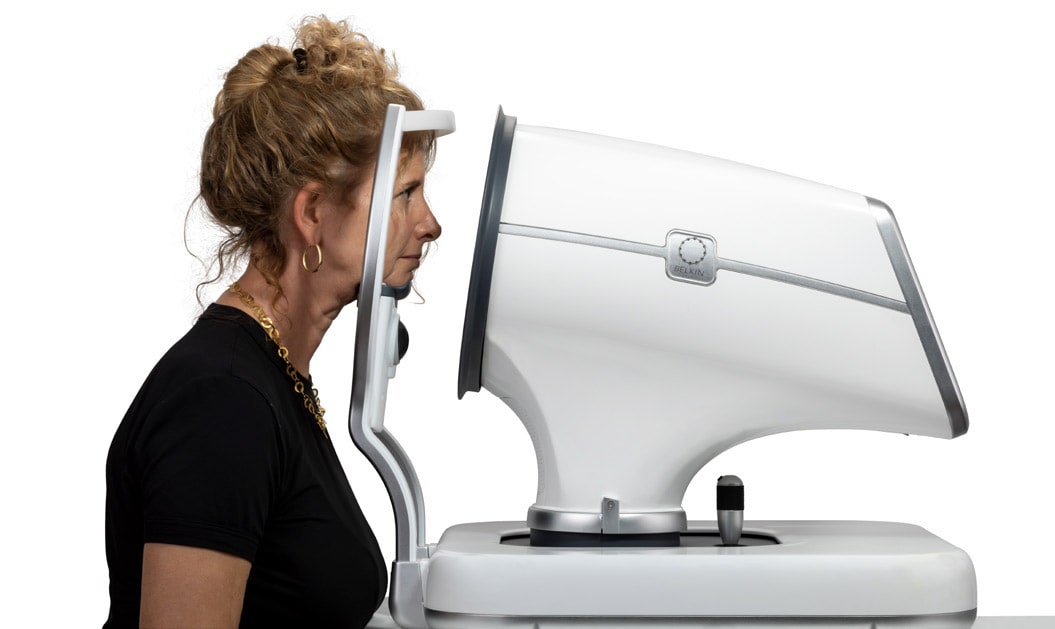Glaucoma
Glaucoma a condition that results in optic nerve damage. The optic nerve relays information from the retina in the eye to the brain where information about vision is processed. Any damage to the optic nerve can result in irreversible loss of vision. In Glaucoma, optic nerve damage can occur as a result of high pressure and in some cases even with normal pressures – a condition known as Normal Tension Glaucoma (NTG). This is a Glaucoma condition that requires treatment and monitoring as it can change and worsen over time.
In the UK 2% of people aged over 40 have chronic open angle glaucoma. The incidence can rise to almost 10% in those over 75 years of age.
What is DSLT?
Direct Selective Laser Trabeculoplasty (DSLT) offers a novel and rapid way of treating glaucoma by lowering the elevated intraocular pressure (IOP). With the press of a button, a low energy light is delivered to the eye which stimulates intraocular flow fluid outflow thus lowering your IOP, which is the main risk factor of glaucoma.
Short laser pulses of low energy light are used to target cells rich in melanin in the drainage area of the eye. This induces a healing response that helps clear cells and reconstruct the drainage trabecular meshwork. This results in an improvement in fluid flowing out of the eye and in turn reduces eye pressure.
How DSLT works
Prior to the scheduled procedure, eye drops will be applied in order to lower the patients’ eye pressure. The patient is then assisted comfortably in front of the laser.
Seated in front of the laser the patient will be asked to focus on the red dot on the panel in front of them. The consultant will align the laser and commence treatment which only takes a few seconds. One eye is treated at a time. Rest assured that the laser will track any natural eye movement.
The DSLT procedure is non-contact other than a lid speculum to keep the eye open during the procedure.
Following therapy, the patient may experience some discomfort in the treated eye, which usually disappears in an hour. The patient may also experience blurred vision for a few hours. This will settle. In general, they can expect to return to their normal activities after the procedure. Their pressure will be checked an hour after their procedure and they will be given steroid eye drops to use over the next few days.

Conventional SLT

Vision DSLT
Does treatment last long term?
The DSLT treatment has been shown to be effective for many years. It can wear off after five years when it can be repeated again. It is therefore very important that you have your eye pressure checked on a regular basis. We advise this is performed 6 monthly along with a visual field and optic nerve analysis annually.
Is DSLT comfortable?
Yes, however there is a slight discomfort caused by ensuring the eyelid is open enough so that the procedure can be performed efficiently.

What to expect after the DSLT procedure?
Following DSLT therapy, you may experience some discomfort in the treated eye, which usually disappears in an hour.
You may also experience blurred vision for a few hours. This will settle. In general, you can expect to return to your normal activities after the procedure. Your pressure will be checked an hour after your procedure. You will be given steroid eye drops to use over the next few days.
FAQs
Adverse effects and complications are extremely rare. A rise in pressure is possible in some patients, which can be sustained requiring further intervention.
This is a laser treatment that is used to improve the drainage system in the eye in order to lower eye pressure. The treatment is considered by NICE (National Institute for Health and Care Excellence) to be a better option than eye drops as a first line option for those newly diagnosed with glaucoma or ocular hypertension[REF 1].
Short laser pulses of low energy light are used to target cells rich in melanin in the drainage area of the eye. This induces a healing response that helps clear cells and reconstruct the drainage trabecular meshwork. This results in an improvement in fluid flowing out of the eye and in turn reduces eye pressure.
This pain-free treatment reduces the need for eye drops to control glaucoma. It is a simple treatment that takes 15 minutes and in the case of DSLT a few seconds. Success rate has been shown to be 78% and is more effective if patients have not been on glaucoma eye drops [REF 2].
The reported success rate at 1 year is between 60 and 90%. The procedure causes no tissue damage and can take 1-3 months to be fully effective. The treatment can also be repeated.
The purpose of both treatments is to lower the IOP by stimulating the trabecular meshwork. SLT is performed by directing the light beam through a gonioscopic lens - a thick mirrored lens which is placed on the eye while the consultant manually rotates the lens over the eye for a few minutes. DSLT, on the other hand, is automatic, non-contact, and does not require a lens.
The landmark LiGHT study recommends laser to be used as a first-line treatment for glaucoma and ocular hypertention. However the laser can be use at any stage of the disease.
Is an outpatient procedure. Your consent to undergo the procedure will be verified by the clinical staff.
You will be seated in front of the laser and with SLT you will have a contact lens placed on your eye to help visualise the area to be treated. You might notice a clicking sound and see light flashes as the treatment is performed. There may be slight discomfort experienced, and the overall SLT procedure will take about 15 minutes.
- https://www.nice.org.uk/news/article/selective-laser-therapy-recommended-to-treat-glaucoma-and-ocular-hypertension
- Gazzard G, Konstantakopoulou E, Garway-Heath D, et al. Selective laser trabeculoplasty versus eye drops for first-line treatment of ocular hypertension and glaucoma (LiGHT): a multicentre randomised controlled trial. Lancet 2019; published online March 9. https://www.thelancet.com/article/S0140-6736(18)32213-X/fulltext
Rate Us
I understand that all my data, clinical and otherwise will be protected under GDPR. I understand my data may used for the purposes of quality improvement and advancement of eye care such as audit. This is a component of good clinical governance and measures will be taken to ensure my data is not identifiable.
